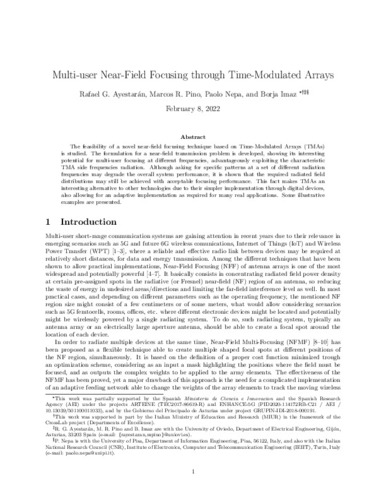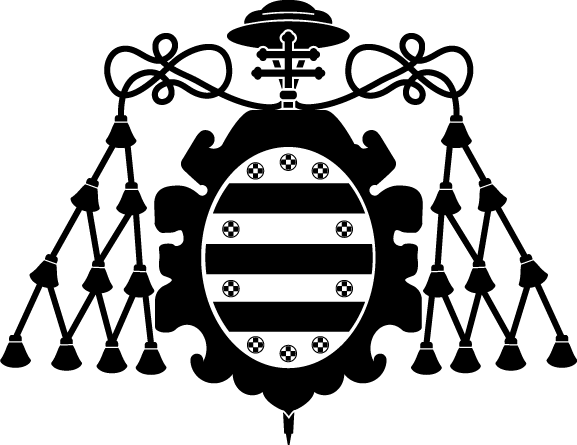Multi-user near-field focusing through time-modulated arrays
Autor(es) y otros:
Fecha de publicación:
Editorial:
IEEE
Versión del editor:
Citación:
Resumen:
The feasibility of a novel near-field focusing technique based on Time-Modulated Arrays (TMAs) is studied. The formulation for a near-field transmission problem is developed, showing its interesting potential for multi-user focusing at different frequencies, advantageously exploiting the characteristic TMA side frequencies radiation. Although asking for specific patterns at a set of different radiation frequencies may degrade the overall system performance, it is shown that the required radiated field distributions may still be achieved with acceptable focusing performance. This fact makes TMAs an interesting alternative to other technologies due to their simpler implementation through digital devices, also allowing for an adaptive implementation as required for many real applications. Some illustrative examples are presented.
The feasibility of a novel near-field focusing technique based on Time-Modulated Arrays (TMAs) is studied. The formulation for a near-field transmission problem is developed, showing its interesting potential for multi-user focusing at different frequencies, advantageously exploiting the characteristic TMA side frequencies radiation. Although asking for specific patterns at a set of different radiation frequencies may degrade the overall system performance, it is shown that the required radiated field distributions may still be achieved with acceptable focusing performance. This fact makes TMAs an interesting alternative to other technologies due to their simpler implementation through digital devices, also allowing for an adaptive implementation as required for many real applications. Some illustrative examples are presented.
Patrocinado por:
This work was partially supported by the Spanish \emph{Ministerio de Ciencia e Innovacion} and the Spanish Research Agency (AEI) under the projects ARTEINE (TEC2017-86619-R) {and ENHANCE-5G (PID2020-114172RB-C21 / AEI / 10.13039/501100011033)}, and by the Gobierno del Principado de Asturias under project GRUPIN-IDI-2018-000191. This work was supported in part by the Italian Ministry of Education and Research (MIUR) in the framework of the CrossLab project (Departments of Excellence).
Colecciones
Ficheros en el ítem





